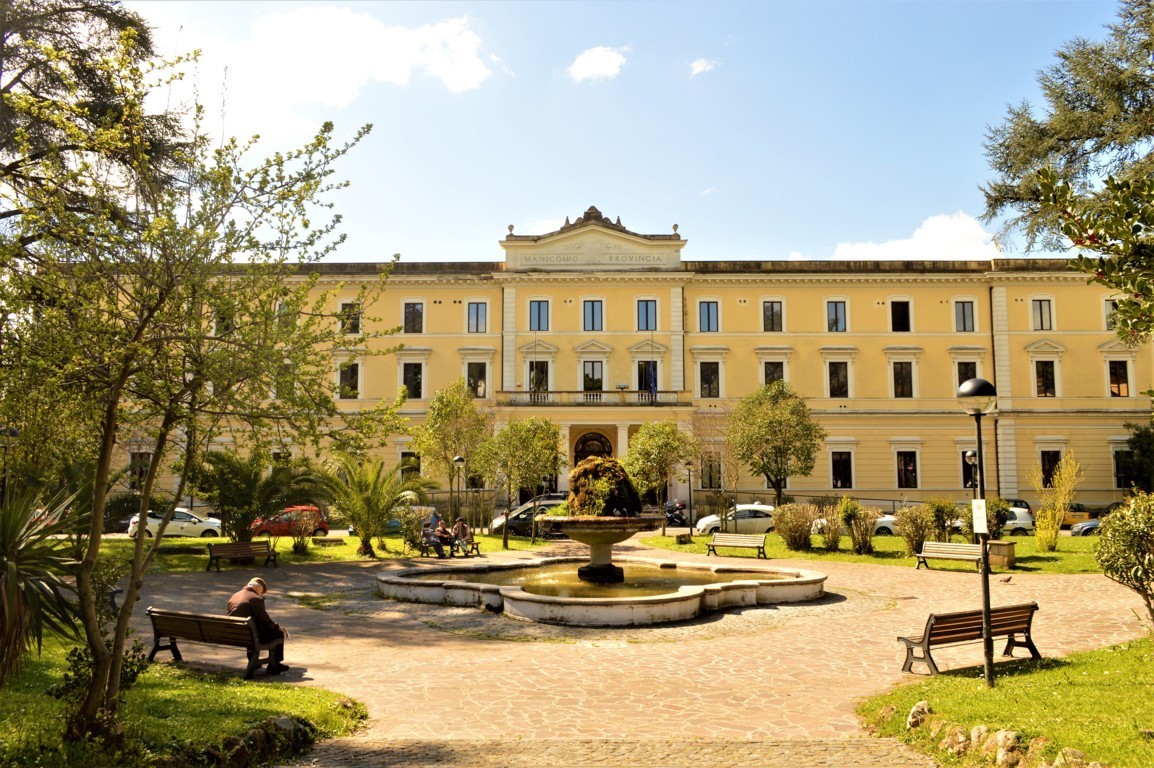
In a dark corner of history in Rome, known as the heart of ancient history and cultural heritage, the story of the Asylum Santa Maria della Pietà is almost completely ignored by most visitors.
16.
For nearly 400 years, from the late 16th century onwards, the institution became a shameful symbol of the exclusion of the mentally ill from society.
The Foundation and Aims of Santa Maria della Pietà
Founded in 1548, Santa Maria della Pietà moved in 1914 to its modern 1,000-bed capacity at the foot of Monte Mario, west of Rome.
Originally planned to be a “retirement home” for the poor, foreigners and the mentally ill, over time it evolved into an asylum for the mentally ill only.
Since its original purpose was to isolate people who were misunderstood and feared in society because they were seen as “abnormal”, it was used more for the protection of other members of society than for the treatment of the sick.
For centuries, Santa Maria della Pietà was run in the light of this idea, with a focus on repression and control, not treatment, claiming that by isolating its patients it was protecting both them and society.
The lack of knowledge about mental illness, the mistreatment of patients and their ostracization by society combined to make this hospital a center of human rights violations.
In-Hospital Life and Treatment Methods
The walls of Santa Maria della Pietà bear witness to the painful stories that took place there.
19.
Until the 19th century, the methods used to treat the mentally ill were quite primitive and inhumane.
Shackling, confinement in dark rooms and electroshock were just some of the common methods of “treatment”.
These methods were based on the belief that mental illness was a moral disorder rather than a disease, and were recorded on the criminal record of patients who were thought to have committed the “crime of disturbing public order”.
Patients were kept in crowded wards with inadequate hygiene and nutrition.
Rather than understanding the nature of the disease, the treatment approach was aimed at controlling patients and transforming them into obedient individuals.
Female patients in particular were treated much more harshly based on gender stereotypes.
Women who were described as “over-sensitive” or whose behavior was deemed “inappropriate” could easily be declared mentally ill and locked up in such hospitals.
Franco Basaglia and the Mental Health Revolution in Italy
In the early 20th century, and especially after the Second World War, attitudes towards mental illness slowly began to change.
As the science of psychiatry developed, the mistreatment of people became more questionable.
One of the most important figures who changed the fate of Santa Maria della Pietà and other mental hospitals was Italian psychiatrist Franco Basaglia.
In the 1960s, Basaglia was shocked to see the inner workings of Italy’s mental hospitals and began to work for their closure, arguing that the treatment of patients was inhumane and that the mental health system needed to change radically.
According to Basaglia, the mentally ill should be treated in the community rather than in closed institutions, and they should be reintegrated back into society to live a life of human dignity.
In mental hospitals, not only the patients but also the staff had to work under oppressive conditions.
In the 1970s, a group of nurses, disturbed by the harsh working conditions at Santa Maria della Pietà, revolted against the existing system and demanded more humane treatment.
The revolt reverberated across Italy and accelerated demands for reform of the mental health system.
Nurses opposed the inhumane treatment of patients and advocated for better conditions for their treatment.
This uprising of nurses provided great support for the movement led by Basaglia.
This revolutionary transformation, backed by the support of both medical staff and society, resulted in the adoption of Law 180 in 1978, known as the Basaglia Law.
The Santa Maria della Pietà asylum was one of the institutions directly affected by this law and, thanks to Basaglia’s determined struggle, finally closed its doors for good in 1999.
His example in Italy has inspired many countries around the world.
Santa Maria della Pietà today: A Silent Legacy
The buildings and rooms of this former mental hospital, which today can be visited as a cultural site, bear the traces of past suffering.
As visitors walk through the corridors of this historic building, they can hear the silent cries of the patients who were locked up and subjected to all forms of violence in the past.
The hospital campus also houses an impressive “Museum of the Mind”.
The abandoned walls of Santa Maria della Pietà, which also tells its story through street art, are filled with 45 different works by around 30 artists.
Interpreting the hospital’s dark past, each in their own way, the artists strikingly reflect the unspeakable emotional and mental difficulties experienced by the patients, the feeling of not being understood and excluded.
The murals, with titles such as “Unseen Things”, “The Key”, “Great Peace”, “Hug Me-Love Me”, “The Sound of Lovers”, not only offer an aesthetic experience, but also aim to raise awareness and sensitivity by drawing attention to the tragic history of the hospital.







Leave a comment: